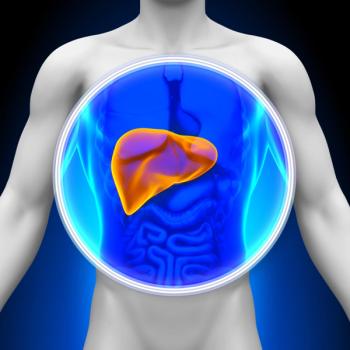
Tabelecleucel Yields Benefit in EBV+ Post-Transplant Lymphoproliferative Disease
The phase 3 ALLELE trial found that using tabelecleucel for patients with relapsed/refractory Epstein-Barr Virus–positive post-transplant lymphoproliferative disease improved efficacy outcomes, specifically for those with hematopoietic stem-cell transplant.
A clinical benefit was observed with tabelecleucel (Ebvallo) in a small cohort of patients with relapsed/refractory Epstein-Barr Virus (EBV)–positive post-transplant lymphoproliferative disease, according to results from the phase 3 ALLELE study (NCT03394365) published in The Lancet Oncology.
The study assessed patients who could benefit from this treatment as they had no other approved therapies. Patients were divided between hematopoietic stem-cell transplant (HSCT) or solid organ transplant (SOT). The median follow-up for objective response between the 2 groups was 14.1 months and 6.0 months, respectively.
In the HSCT group, the objective response rate (ORR) was 50% (95% CI, 23%-77%), 43% of patients had a complete response (CR), 7% had a partial response (PR), 21% had stable disease, and 14% had progressive disease. The median time to response was 1.0 months, and 71% of patients had a clinical benefit. The median duration of response (DOR) was 23.0 months (95% CI, 15.9-not estimable [NE]).
In the SOT group, the ORR was 52% (95% CI, 33%-71%), with 21% of patients having a CR, 31% having a PR, 7% having stable disease, and 24% having progressive disease. The median time to first response was 1.1 months, with 59% of patients having a clinical benefit. The median DOR was 15.2 months (95% CI, 1.2-NE).
“Tabelecleucel provides clinical benefit to patients with post-transplant lymphoproliferative disease and is ready in advance of patient need as an off-the-shelf product. Using tabelecleucel to target and eliminate EBV-infected B cells is a promising approach for EBV-positive post-transplant lymphoproliferative disease following HSCT or SOT, consistent with [National Comprehensive Cancer Network] Clinical Practice Guidelines in Oncology,” the study authors wrote.
A total of 43 patients were included, with 14 having HSCT and 29 having SOT. All patients received at least 1 dose of the study treatment. The median age for all patients was 48.5 years, a majority of patients were male (56%), and a majority were White (84%). The median ECOG performance score was 1, and 28% of patients had one of 2 or more. Most patients were diagnosed with diffuse large B-cell lymphoma (67%), 77% had extranodal disease at screening, and the median lines of previous therapy was 1. The median time from diagnosis to treatment was 4.0 months.
Overall, patients received a median of 6 doses of tabelecleucel, with a median of 2 cycles. In the HSCT group, the median treatment duration was 2.8 months compared with 1.9 months in the SOT group. Subsequent treatment was given to 14 patients.
At 1 year, the estimated overall survival (OS) rate in the HSCT group was 70.1% (95% CI, 38.5%-87.6%), and the estimated median OS was not reached. The median follow-up after the first response was 15.9 months.
Additionally, the estimated 1-year OS rate in the SOT group was 56.2% (95% CI, 34.6%-73.2%), and the median estimated OS was 16.4 months (95% CI, 5.0-NE). After the first response, the median follow-up was 2.3 months.
Regarding safety, treatment-emergent adverse effects (TEAEs) of any grade occurred in 36% of patients in the HSCT arm and 55% in the SOT arm. These included pyrexia (36% vs 28%) and diarrhea (29% vs 28%). Serious TEAEs of grade 3 or higher occurred in 57% of patients in the HSCT group and 52% in the SOT group.
Serious treatment-related AEs (TRAEs) occurred in 4 patients between both groups. Grade 3/4 TRAEs occurred in 2% of patients. Grade 3 or higher TRAEs included grade 4 erythematous rash, grade 3 hypertension, and grade 3 hypoxia.
Overall, 29% of patients in the HSCT group and 48% in the SOT group died. In the HSCT group, 7% of patients had a fatal TRAE compared with 14% in the SOT group. These included progressive disease (n = 3), respiratory failure (n = 1), and multiple organ dysfunction (n = 1). The investigators noted these deaths were not related to tabelecleucel. The remaining patients who died occurred due to other causes that did not meet the criteria of a TRAE.
Reference
Mahadeo KM, Baiocchi R, Beitinjaneh A, et al. Tabelecleucel for allogeneic haematopoietic stem-cell or solid organ transplant recipients with Epstein-Barr virus-positive post-transplant lymphoproliferative disease after failure of rituximab or rituximab and chemotherapy (ALLELE): a phase 3, multicentre, open-label trial. Lancet Oncol. Published online January 31, 2024. doi:10.1016/S1470-2045(23)00649-6
Newsletter
Stay up to date on recent advances in the multidisciplinary approach to cancer.
































































































